How do we ensure all students can access the curriculum plus find it relevant and engaging?
Angela Di Michele Lalor, author of Making Curriculum Matter: How to Build SEL, Equity, and Other Priorities into Daily Instruction, offers a guide for teachers and leaders to begin this work.
In our conversation, we discuss:
Why it is important to prepare for an uncertain future,
The five lense for viewing our instructional plans, and
How purchasing curriculum resources is not enough.
As Angela points out, “curriculum can impact student learning because it's more than just a product; it's a process.”
Recommended Resources
Full Transcript
Matt Renwick (00:00):
Welcome Angela to the podcast. I'm excited to have you here.
Angela Di Michele Lalor (00:11):
Thank you for having me. I'm excited to be here.
Matt Renwick (00:13):
I was just sharing with you just how I came across your work. I was teaching curriculum courses for UW-Superior, The University of Wisconsin-Superior. I used your first book, Ensuring High-Quality Curriculum as our primary text. And I appreciated how you described the steps to engage in that work. You made it very clear, lots of examples. So I was excited to learn that you're coming out with a new book and it's now out, Making Curriculum Matter: How to Build SEL, Equity, and Other Priorities into Daily Instruction. It's also through ASCD. If you want to share a little bit about your role in education and how you work with teachers, schools, and districts...
Angela Di Michele Lalor (00:55):
Sure. So I have been in education now for about 25 years. I started off as a classroom teacher and then started to do professional development with teachers from all different grade levels and subject areas. It was kind of a life transition. I had the opportunity to start working with teachers and share my own story about how I was engaging students in my classroom, using projects and performance-based assessments, and at the same time had my children and was able to make that transition. I've always found that working with educators to be a very satisfying job, because as I have worked with them, I've learned from them. And unfortunately, you know, educators don't have the opportunity to travel from one classroom to the other. And so I have always made it my goal and my mission to share the stories of educators as I traveled from one school to another, and to share their best practices and what I've seen.
Matt Renwick (02:03):
Yeah. Your book, your newest book, Making Curriculum Matter, it has a lot of nice examples from different grade levels and different subject areas, which I know it can be very hard, especially for an author to highlight all those different stories. So it's relevant to anyone who's reading it. And I thought they were really nice. I liked how you juxtaposed [how] this is what it might look in the beginning, but here's how you can improve it through these five lenses. That's what you offer in the book: practices, deep thinking, social and emotional learning, civic engagement and discourse, and equity, which we can go over in a little bit. I wanted to start in the beginning. You talk about your family a little bit and just how the pandemic gave you a new perspective, especially with your daughter working in the medical field in New York, correct?
Angela Di Michele Lalor (02:51):
Yes. She was a frontline worker and I have to say, I deeply respect everyone in the medical field: frontline workers, first responders who went through everything that we've gone through in the last two years. And to see my daughter who was a new nurse. So 22 years old, going out every day and working to save lives. That's really what it came down to. As a parent, that was a difficult experience and we wanted to do anything that we could to support her. So, when you ask me that question, there's a lot of things that come to mind, you know, how that whole experience has impacted us as a family, how it's impacted my view on education and just life in general.
Matt Renwick (03:54):
How did your experience with your daughter, how did that influence your beliefs about education? You mentioned the flying pigs example and what's possible.
Angela Di Michele Lalor (04:04):
Yeah, initially we weren't sure what was going to happen. And it was very easy to believe that we were, that it was gonna be really difficult to come out of this situation and to see that perseverance, to see the commitment. That's really the piece that stayed with me and that's about, anything is possible when my daughter would go into work. She really did not know what was going to happen while she was there. It was unpredictable. And she would come home sometimes and just say, "Wow, I didn't know if I was going to make it." Because she was used to being an ICU nurse. She was used to having unstable patients, but never so many at the same time. And so I think about that in terms of education. It made me realize that we have to really think about schools as places to prepare kids for the unknown, because this was completely unexpected. No one could predict what was needed, what was necessary. And we were asking people to make decisions based on what limited knowledge they had. And so that's something we had to prepare everyone to do. So I think that's the challenge of education. How do we prepare for a future of unknown?
Matt Renwick (05:27):
Yeah. Going into this year, 2021 and the fall, we know more. So we feel a little more competent, but then we have all these variables too. Are they masking? Are they not? And I think we're still going to be living that unknown. It kind of related to your book. You have this word cloud of all the initiatives and issues that educators have to deal with and it was just enormous. And I could relate: how do you manage all of these ideas and education? But in your book, you focus on these five ideas. How did you come up with...how did you decide on these five ideas to help frame the book and frame curriculum development?
Angela Di Michele Lalor (06:06):
So when I wrote Ensuring a High-Quality Curriculum, that was really about, what are the elements of a quality curriculum that could impact student learning? And from there, I started to think about, is this about what the curriculum should look like, what should we be addressing? What are the valued outcomes that need to be addressed in every single curriculum? Because I truly believe that curriculum is a tool that teachers use to make informed decisions about what happens in their classroom. And if that's the case, then we need a curriculum that does more than just focus on content because teachers are expected to do more than just focus on content. And so I started to think about all the professional development initiatives that I've facilitated over the years and the different topics I've been asked to come in and speak about and to work with teachers.
Angela Di Michele Lalor (07:00):
And that started to really help me to formulate some of those areas of focus, some of the elements of a curriculum that matters. So often I'm brought in to work with subject area teachers and the subject area teachers, discipline-specific teachers. They really know their content very deeply and very well, but there's a part of their content that really is about working with information. And that is the practices. So often I was coming into schools to work with practices. How do we take historical thinking skills, the standard for mathematical practices, and really tie them into content specific practices and use them in the classroom. So part of the different part of the process for me in identifying these elements was on that experience. I was doing a lot of work with districts on developing critical thinkers. So I started to think about the kind of the buckets in terms of what I was being asked to do. And then I was also starting to do a lot of work around the vision and mission of schools. So we started to look at what is the vision and mission and how are you taking your vision and mission and carrying it out in school buildings, and how does your curriculum tie to that? And so that also brought a new way for me to think about what are these main categories that I'm seeing consistently over different, in different places around the country.
Matt Renwick (08:32):
It's really that lived experience working with all these schools and then seeing their mission and vision, and so very practical. When I read these five, I could not disagree with any of them. And I see a lot of that language in many of the missions and visions as well. So you make a point to, and I think it was important, [that] you're not adding more to the curriculum, but really it's about changing the lens. From the book, "changing the lens for viewing, discussing, and implementing the curriculum" Can you just say a little bit more about that?
Angela Di Michele Lalor (09:09):
Sure. So one of the things with these categories is that it it's a category. So it allows each school to look at what's in their vision and mission, what's in their curriculum in a way that's very localized and personalized to that school.
Matt Renwick (09:25):
I want to piggy back off that and say, as a principal, I appreciate having these elements and ideas for myself to view the curriculum and help with the implementation of it. Because I can focus on practices or deep thinking or social emotional learning in any classroom. I think you speak to that in the book and here as well.
Angela Di Michele Lalor (09:52):
Yeah. I think what happens is that when you categorize something, we're putting it into category, but the lines are really blurry. And that's where you get into that concept of changing the lens. So in order to do something well, we have to be able to identify it, talk about it, and then look at it in terms of implementation. So you need the category in order to do that. Um, and so I think that changing the lens makes it more manageable. You can begin to say, okay, so I'm looking at practices which is taking a look at what professionals are doing in the real world is going to help you to make a connection to the ultimate goal of any curriculum, which is to provide students with equitable learning experiences. So we have to be able to see each of the lenses in the curriculum, which is why we're not adding more, we're being able to identify it, to do it more intentionally in order to build equitable learning experiences for all kids.
Matt Renwick (10:58):
And I think all five can lead to that. And I just thought, if you could take a moment just to briefly expand on each idea, what it is and why it's important for making curriculum matter. If we can start with the first one, practices.
Angela Di Michele Lalor (11:17):
I spoke a little bit about practices. Every discipline has a set of practices. And I think when I use the term practice, I guess the best analogy is really thinking about sports or music, right? So I spent a good portion of my life driving my kids to practice. And what did they do at practice? They did drills so that they can improve in a lot of ways. That's what we want to see happen in a classroom. So practices are the kinds of things, strategies that students can use so they can improve in their learning.
Matt Renwick (11:49):
It's not necessarily teaching practices. Although those are also important. It's the disciplinary...if you're studying, writing, you know, it's the practices of a writer.
Angela Di Michele Lalor (12:02):
Exactly. And so if we want to grow as writers, then we have to practice writing and we have certain strategies we can use to do that. And when we repeat them, they become a way or a process to become a writer to grow as a writer. So it seems like a logical place for schools to start to really look at their curriculum, because if the practices are not there, it's hard then to build in the other elements. It's not impossible, but it's just checking to see, are they explicitly identified or do we see practices as being, for example, the mathematical practices. Are they not listed in every single unit? Then we're not really emphasized and focusing and giving students tools that they need to access high expectations, which is one of the components of an equitable curriculum.
Matt Renwick (12:56):
And it makes it more relevant, I would think too, that the practices are associated with that career or vocation of that unit. The next one is deep thinking, where you speak about different levels of cognition and also knowledge.
Angela Di Michele Lalor (13:14):
Yes. We talked about deep thinking. It's a combination of both. I think about Bloom's revised taxonomy. I think it is an excellent tool for really understanding deep thinking because it's taking in what kind of thinking am I doing? And what am I thinking about? And so any kind of engaging meaningful task is going to require deep thinking because engaging meaningful tasks are usually multiple steps. The other thing is that we engage in deep thinking, when we really want to make sense of something and we want apply new knowledge, we have to recognize when we're giving students the opportunity to engage in deep thinking,
Matt Renwick (13:56):
Third, social emotional learning. I have personally sometimes struggled with, how do we weave that part of it into the more academic side of things? What are your thoughts on that?
Angela Di Michele Lalor (14:07):
So the quick answer is there's two ways that we can do it. One is we can look at what we're teaching students. So you think about the book students are reading or history or the historical figures that they're studying. And you use them as examples or non examples of how social emotional skills and competencies have been used. So when a character makes a responsible decision, you point that out to the students, "What was that decision making process? What did we learn from watching the character making them make that decision make?" Go through that decision making process that you can use yourself. So that's one simple way of how we incorporate it. The other is that we are, [and] it goes back to engagement, if we're truly asking students to engage in their learning, they need to monitor themselves. And so we can't assume that students know how to do that. Multi-step tasks, multi-step projects require students to think about, "I have to do this as a priority first, and when that's done, then I can move to step two." So actually getting into the responsible decision-making and that management process is easily integrated into the curriculum.
Matt Renwick (15:24):
Yeah, the way you describe it, that seems like a natural fit. Civic engagement and discourse, probably more needed than ever. What entry points do you see with the curriculum?
Angela Di Michele Lalor (15:40):
So this is one of the elements that came from the vision and mission of schools. Every vision and mission I've read has always said, "We want our students to be responsible, we want them to engage, to be responsible citizens." And then I would ask, "So how, how do you do that?" Most schools don't have have students engaging in the local community or making some kind of contribution to an organization that they choose and they feel that they need to support. And so when I asked that question, "How do you see it?", this is what led to that civic engagement being part of the curriculum. It calls for project-based learning and for students to engage in curriculum embedded assessments, where they are actually engaged in projects that they are learning while they're doing and that become a form of assessment that's real life, authentic experiences.
Matt Renwick (16:45):
Yeah. I recall one example you put in there about studying a bill that's currently being discussed and debated, and then actually writing a letter to your local representative. And I appreciate that just for the authenticity of it, but also it could actually make an impact. I mean, you could change someone's mind, which is really powerful.
Angela Di Michele Lalor (17:09):
I've discussed this with other educators and sometimes I'll get the question: "Do you engage in discourse first or in the action itself?" And it's not that one goes in front of the other. It's just a natural integration of both. And I think it's important. We have to teach students how to speak to each other. We have to get them to really understand how to use evidence to support their thinking. And that's part of that civic engagement and discourse that should be completely integrated into all content areas.
Matt Renwick (17:43):
And how to listen. That flip side to speaking. I don't see it taught a lot in schools, how to listen. So I appreciated seeing that in there. The last one, equity... It seemed like everything listed here kind of leads toward equity. Is that how you designed it with the book?
Angela Di Michele Lalor (18:04):
Yeah, absolutely. That's where it goes. Changing the lens is so important. So as you are changing the lens to look at each of these different elements, you begin to see how they really are engaging students in learning. And then looking through the lens of equity gives language and actions to what we are doing. We are building a curriculum in this way because it's the intentionality that leads to the equitable learning experiences. But equity is an element in and of itself. Just because you have quality learning experience, doesn't allow for all students to engage in equitable learning experiences. There is an examination of self that needs to go into this. There's an understanding of culturally responsive practices. It's a deep understanding of who the students are in front of you. And that's why it is the ultimate goal, but it's also an element in and of itself.
Matt Renwick (19:07):
Yeah, your list and your descriptions caused me to already change our professional learning plan this year. I think I need to go back to practices first. I was looking at equity first, and I think we can talk about it, but just going through your resource here it's been helpful for me to think about where to start and where we want to go. So I had one more question for you, and this is just more of a lived experience here. Curriculum development is time-consuming work. I'm sure you've found that. And I have heard educators who are engaging in this work ask, "Why are we doing this?" You know districts will buy a program off the shelf and call it the curriculum. So what about this work helps ensure the curriculum matters to students and teachers versus just finding one and adopting it.
Angela Di Michele Lalor (20:01):
So I think that curriculum can impact student learning because it's more than just a product; it's a process. And so that's why it's worth the time, effort and energy to take a group of teachers and have them really think about what they're teaching, why they're teaching it, and what students are learning as a result - how students are engaged in that process. So it is something that is ongoing. You're never done once you're done. It's time to start again, even in districts where they do purchase a program. I think it's still important to develop some type of document that really highlights what's most important. This program: Why did we choose this program? How can we use this program to meet the needs of the students who are sitting in front of us? Because if we want equitable learning opportunities for all students, then a pre-packaged program is not going to do that because it doesn't know who the students are, who were sitting in front of the teacher. So even just being able to say, this is how we see, this is how we modify. This is how we can use this program. What's in it to meet the needs of our students is worth the time and effort of going through the curriculum process.
Matt Renwick (21:26):
You're not against purchasing a resource, but what you're promoting is to make sure you personalize it and make it relevant and meaningful and equitable all your students. Well, I've enjoyed listening to you. I've been taking notes for my own work as you've been talking and should be rereading parts of your book, Making Curriculum Matter: How to Build SEL, Equity and Other Priorities into Daily Instruction. I would also encourage any listeners to check out her previous book, Ensuring High-Quality Curriculum. Where can we go to learn more about your work, Angela?
Angela Di Michele Lalor (21:59):
So I have a new website, it's adlalorconsulting.com. There's some resources there, some tools, there's also a blog that I occasionally will add to, but that's the best place to find more information about me.
Matt Renwick (22:18):
Well, thank you Angela and good luck with this upcoming school year.
Angela Di Michele Lalor (22:22):
Thank you. Thanks for having me, Matt. I appreciate it.



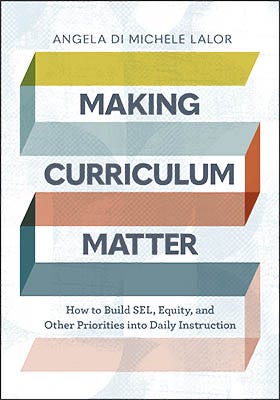


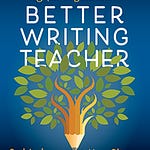
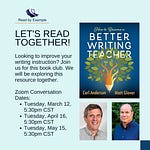


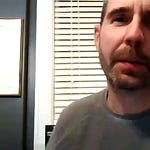
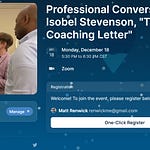

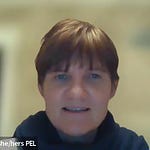
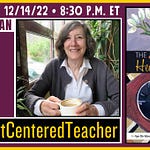
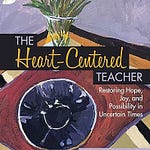
Making Curriculum Matter